The availability of high-strength wicking geotextile has been a fascinating development. From pond slope reinforcement to highway frost boil management, these materials have shown significant benefits. Here, John Folts writes about the economical use of a wicking geotextile to repair failed pond slope sections. This article appears as part of Geosynthetica’s GeoAmericas series.
1. PROJECT INTRODUCTION
The failure of the side slopes (Figure 1) along a detention pond in the Weldon Ridge Subdivision, located in Cary, North Carolina, required a significant amount of repair. The original design plans included removing the spoils and installing a typical gravity gabion basket retaining wall (Figure 2). Access restrictions into the site made getting stone to fill the baskets an extremely expensive option, therefore alternative solutions were investigated.
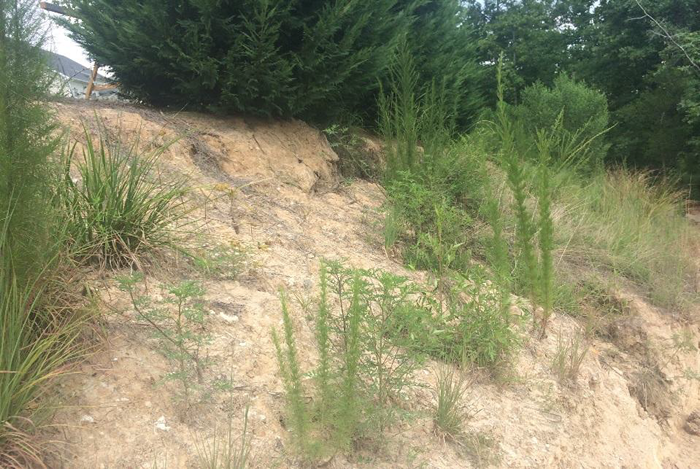
A slope reinforced incorporating a uniaxial geogrid was evaluated, but access for importing the required free draining material for backfill or even just the aggregate for drainage was too difficult and costly. The use of the on-site soils for backfill quickly became the goal. The problem was the on-site soils contained a high amount of silt and clay and would not be suitable for a 2:1 (Horizontal: Vertical) slope when saturated.
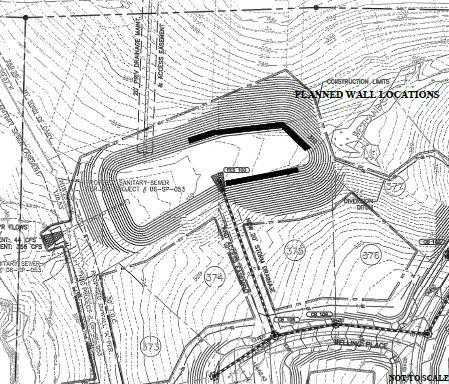
A new, innovative wicking geotextile was also considered. Testing of this new product that was conducted by Professor Xiong Zhang from the University of Alaska Fairbanks (2011) was reviewed in determining whether or not this would be an appropriate application for this product. The long term design strength and wicking ability were determined to be adequate for this site.
2. WICKING GEOTEXTILE IN DESIGN
The local geosynthetic distributor contacted the geosynthetic manufacturer’s Engineers to help with the product selection. The revised design incorporated the use of multiple layers (as many as 6 layers) of the high strength wicking geotextile for both its reinforcing strength and drainage ability. The design called for the high strength wicking geotextile to be placed horizontally in layers spaced 0.6 m apart and extending into the embankment a minimum of 4.0 m, longer if water was encountered (Figure 3).
RELATED: 6-Year Update: Frost Heave Mitigation for Alaskan Highway
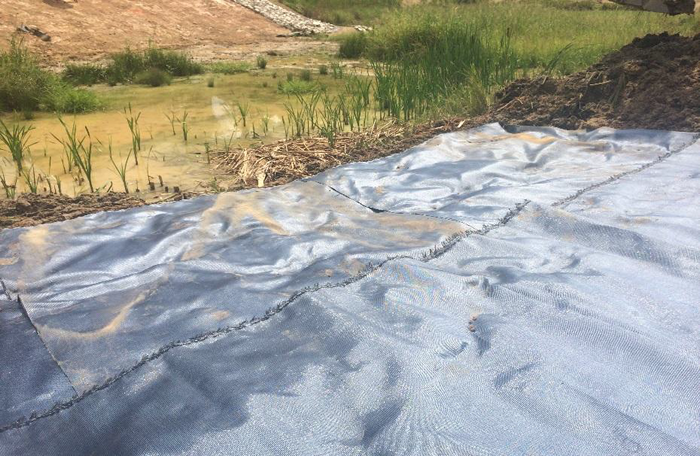
The slope was designed to have a minimum overall factor of safety of 1.3 against failure. The ultimate tensile strength of the geotextile was 78.8 kN/m (ASTM D4595) and the long term design strength was determined to be 16.3kN/m.
3. POND CONSTRUCTION
Construction was performed in relatively short sections (less than 15 meters along the slope) to allow for the reuse of the on-site soils. The high strength wicking geotextile was placed so it would drain in the direction of the detention pond. The geotextile was installed “shingle style” when it needed to be extended beyond the roll size, so it would optimize the water flow.
The on-site highly plastic clay soils (classified as CH) were allowed to be used for backfill and were placed in lifts of 30 cm or less and compacted using a walk behind vibratory sheepsfoot roller (Figure 4).
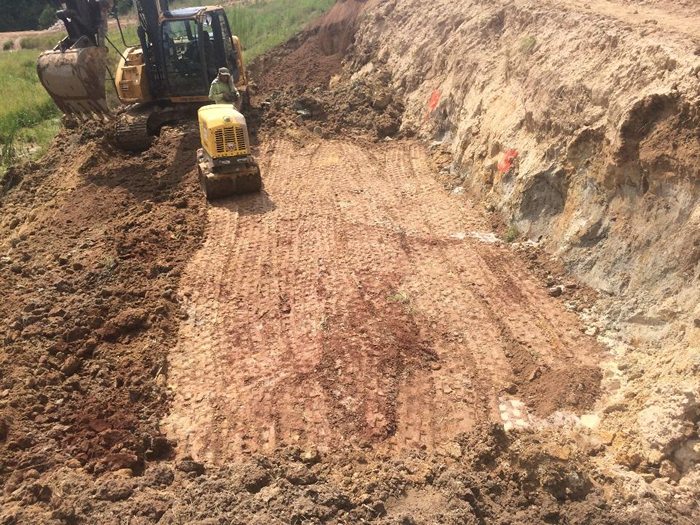
The geotextile extended to the face of the slope and then down the slope approximately 0.6 m and was covered with approximately 5 cm of soil to protect the slope’s face from surficial movement and erosion. The idea was to allow for the vegetation to grow into the end of the geotextile and help remove the water. The final grade along the slope face was smoothed over with the excavator (Figure 5).

During construction, bedrock was encountered in one area and water was observed seeping into the excavation. The geotextile was extended approximately 6.7 m into the slope to capture the water. The next day water was observed coming out of the slope face in that area (Figure 6). This was proof that the wicking of the water was already occurring.
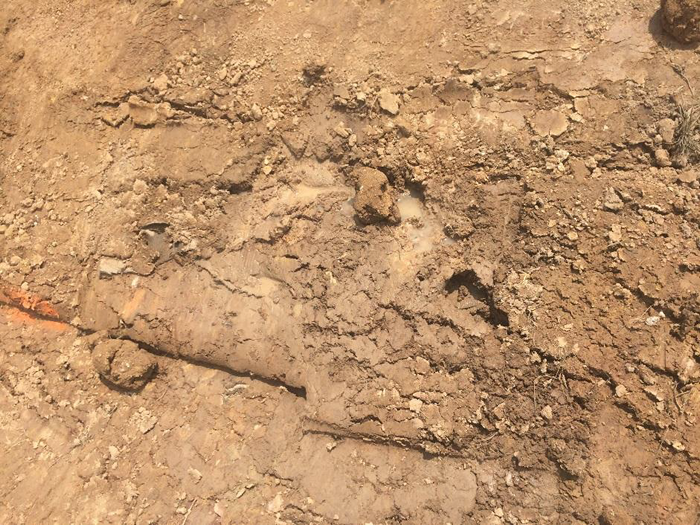
4. CONCLUSION
The detention pond construction was completed with a total project savings of approximately 25%. The original cost estimate was ~$200,000.00, but with the implementation of the innovative high strength wicking geotextile, the final project cost was ~$150,000.00. The timeline for construction was also sped up by not having to import material via the difficult access trails.
The utilization of the high strength wicking geotextile allowed for the slopes to be constructed at the original design heights of up to 7.6 m with a 2:1 (H:V) slope. This approach helped to reinforce the unstable slopes as well as provide drainage and surface protection.
A site visit was made a year later to observe the vegetative growth and to visually inspect the slopes. Vegetation had been established and no visible signs of slope movement within the reinforced areas could be seen (Figure 7).
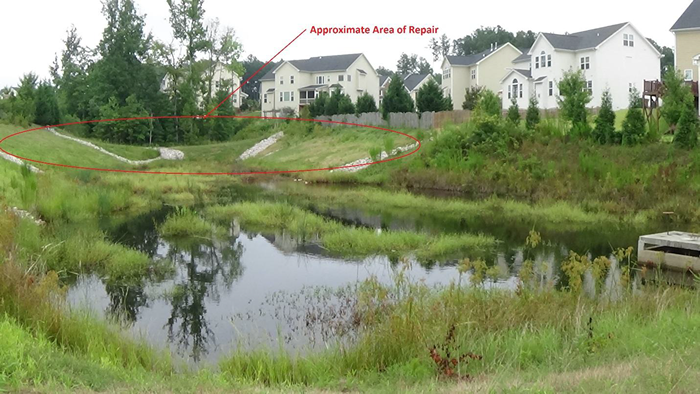
ACKNOWLEDGEMENTS
The author would like to acknowledge Marc Burke with Edge Environmental, Inc. and Andy Gerberich and John Parrish of GetsCo, Inc for their contributions to this paper.
ABOUT THE AUTHOR
John Folts, P.E., works for TenCate Geosynthetics Americas.
REFERENCES
Zhang, X. A.M. ASCE, and Belmont, N. (2011). Use of Wicking Fabric to Help Prevent Differential Settlements in
Expansive Soil Embankments. Geo-Frontiers 2011©, ASCE 2011, Dallas, TX, USA, pp 3923.












